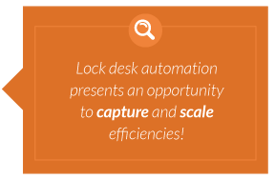In the previous blog post on this subject, we covered how most loans in the U.S. mortgage market are sold to secondary market investors during or immediately following the origination process. The complexity that follows creates a series of functional requirements for lenders, including investor selection, loan pricing, lock desk management, pipeline risk management, and committing.
In this blog post of the multi-part series, we describe the value in margin precision, lock desk efficiencies, and seamless system-to-system integrations — all technologies that exist today.
Margin management requires extreme granularityManaging margins in a precise, flexible, and timely fashion is critical in a highly competitive environment. Margin strategies must balance competitive pricing with profitability goals — and be ready for change in a moment’s notice. Because margin strategies typically vary by geography, loan type, investor, and business channel, the margin maintenance can become quite complex, and that complexity increases the need to automate the margin management process.
The Lights-out Lock desk
The lock desk serves as a vital control point and service center for secondary marketing operations, and its efficacy has a major impact on profitability. Every lock desk must deal with myriad changes, from switching products to price concessions, and complicated policies governing investor modifications. What’s more, staff management must quickly adjust to unexpected volume fluctuations caused by rising and falling interest rates. Lock desk automation presents a huge opportunity for lenders to capture scale efficiencies by leveraging existing staff and reducing error rates.
products to price concessions, and complicated policies governing investor modifications. What’s more, staff management must quickly adjust to unexpected volume fluctuations caused by rising and falling interest rates. Lock desk automation presents a huge opportunity for lenders to capture scale efficiencies by leveraging existing staff and reducing error rates.
Open your business to the power of APIs
Software design is increasingly focused on enabling system-to-system interaction. Ideally, these interactions are supported through Application Programming Interfaces (APIs) published by the tech platform operator. For lenders, APIs mean new possibilities to leverage highly specific secondary marketing system capabilities. Specialized APIs can display price data on consumer websites, support locking within a custom point-of-sale system, or re-check loan eligibility at underwriting. Forward-thinking lenders now automate a wide array of key processes with secondary marketing system APIs.
In the next and final blog, Automating the Secondary Marketing Function — Part III, we will discuss the importance of connecting your product eligibility and pricing engine to other critical systems, managing mandatory execution risk with automation to grow your bottom line, and using analytical tools to measure performance and gauge competitiveness.
Remember, several applications are seamlessly integrated across the Optimal Blue platform, including a robust content management application, a product eligibility and pricing engine (PPE), a hedge analytics solution, and a digital whole loan trading system. These integrations help solve many of the manual processes that most lenders experience today.
